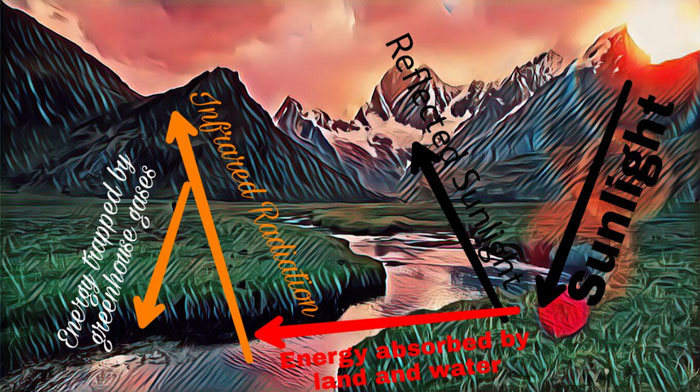GLOBAL WARMING
The Greenhouse Effect, we all heard of, but how does it work?“The temperature rise will be small in the tropics, but much greater at high latitudes.”,
warns the University of Columbia!
Crucially, we have to develop a good understanding of the Greenhouse Effect, if we want to know Climate Change fully. We can compare the Greenhouse Effect to a real greenhouse since a greenhouse uses a similar method to collect heat. It lets sun rays in, yet it traps some of the sun rays inside itself. For that reason, it can receive a precise temperature on day time and then exploit its reserves in the night time. On a larger scale, certain gases (we call them Greenhouse Gases(GHG)) are trapping the heat, which was created by the sunlight that falls in the atmosphere. Just like a greenhouse
More specific:
The sunlight that falls on earth is mostly the visible light, which we can see. The reason for it is that the atmosphere is almost entirely transparent to those wavelengths. On the other hand, higher frequencies like ultraviolet usually are reflected back into space. As the sunlight hits the ground, part of it gets reflected into space, as well. How much usually depends on the reflectivity of the ground. The rest of the sunlight gets absorbed by land and water and is being held as thermal energy. Later, it is re-emanated in the form of longer wavelengths, which we call infrared radiation. However, when the infrared radiation hits a GHG, it will reflect back to earth. Thereby its passage gets delayed, which causes the earth to heat up.
Which Gases are Greenhouse Gases?
Water Vapor
Carbon Dioxide
Methane
Nitrous Oxide,
(This chapter (The Greenhouse Effect and Greenhouse Gases) is based on

A little factory in the Rhine area.

